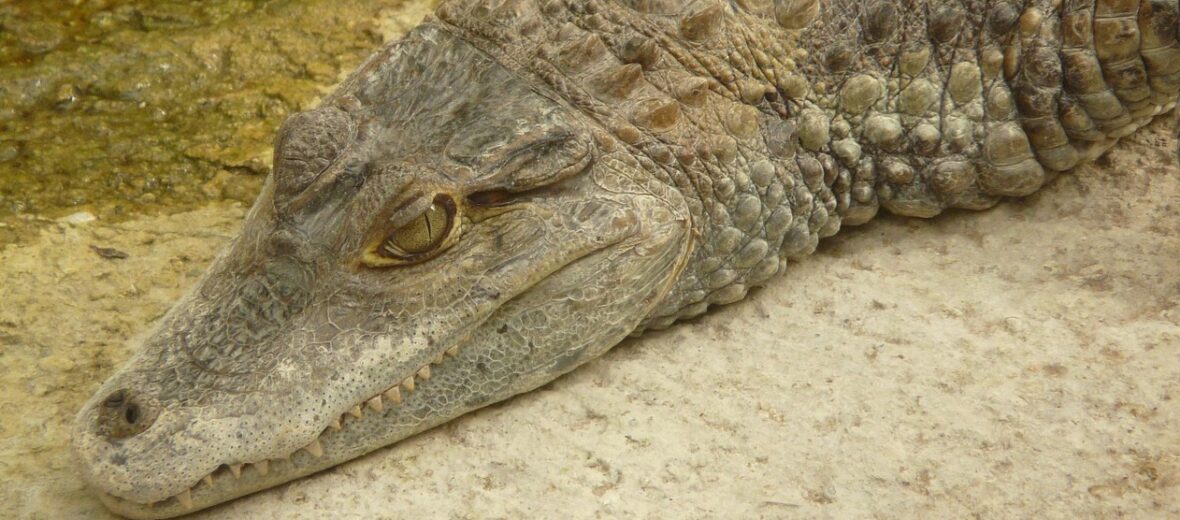
Among the large host of critters found in the Amazon is the black caiman, a carnivorous (eats meat), semi-aquatic crocodilian that calls the Amazon rainforest its home. There are 6 known species of caiman found in Central and South America: in Puerto Rico, Brazil, Ecuador, Peru, Colombia, French Guyana, and even Cuba. The caiman can be found in flooded savannas, swamps, slow moving rivers, lakes, and mangroves.
First the Stats…
Scientific name: Caimaninae
Weight: Up to 1,000 lbs.
Length: Up to 16 feet
Lifespan: Up to 40 years
Now on to the Facts!
1.) Their long, flattened tail is used for swimming and for protection against predators.
2.) Caimans have excellent sight and hearing.
3.) Its diet usually consists of crustaceans, fish, small reptiles, and birds. Young caimans eat a variety of invertebrates.
4.) Humans, jaguars, and larger caimans are their primary predators.
5.) These crocodilians are beneficial to their environment in that larger caimans (black caiman) help to naturally cull capybaras and they all feed on piranha.
But wait, there’s more on the caiman!
6.) Humans and jaguars are their primary predators.
7.) The caiman is a solitary creature that only comes together with others during the mating season; which is just after the dry season
Did you know…
Caimans not only have to look out for other predators, they also have to look out for other caimans. That’s right, they’re cannibals!
8.) They are nocturnal (active at night) hunters.
9.) A caiman can swim at bursts of 30 mph!
10.) Females lay up to 65 eggs in a 5 foot wide mound she builds. When the eggs hatch she will tend to her young for a short time.
11.) Like a lot of other reptiles, temperature plays a large role in the development of the young. Cooler temps equate to mostly females and warmer temps equal more males.
Now a Short Caiman Video!
Also, check out the Critter Science YouTube channel. Videos added frequently!
Want to suggest a critter for me to write about? Let me know here.



